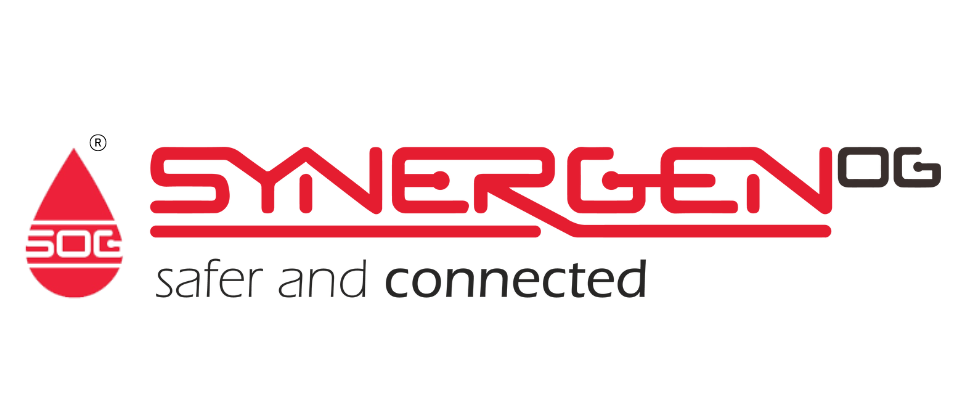- What is meant by process safety?
Process safety is a disciplined framework for managing the integrity of operating systems and
processes that handle hazardous substances by relying on good design principles, engineering,
and operating and maintenance practices. - What does Process Safety Management (PSM) mean in safety?
Process Safety Management addresses the safety measures required to prevent accidental release of hazardous material from its containment such as vessel, piping and tank. Process Safety Management is a structured and proactive risk-based approach which uses implementation techniques to manage process safety risks.
- What is Process Safety and why it is so important?
Process safety deals with large scale and catastrophic workplace risks with major consequences, including fatalities, injuries, property damage, lost production, or environmental damage. It investigates the events that have potential to release hazardous materials and energy.
Process safety is important to prevent catastrophic events and help reduce the occurrence of a major accident - What is the purpose of Process Safety Management (PSM)?
The objective of process safety management is to ensure that potential hazards are identified, and mitigation measures are in place to prevent unwanted releases of energy or hazardous chemicals into locations that could expose workers to serious injuries or fatalities.
- What are the three key aspects of process safety?
Process safety is about managing the integrity of operating systems by applying inherently safer design principles, engineering and disciplined operating practices.
- What are process safety risks?
Potential hazardous events that arise from unwanted conditions /chemical processes, i.e., fire, explosions, toxic gas releases, dust, etc. comes under process safety risks.
- What is Process Safety Management (PSM) training?
Process Safety Management Training is a course intended to provide a clear understanding of the Process Safety Management framework elements. It also provides guidelines on how to integrate the Process Safety Management element requirements into other Company programs.
SOG Academy – Process Safety Management Training – Learn More
- What is Process Safety Study?
Process safety study is a thorough assessment that identifies potential causes and evaluates the consequences of hazardous releases, e.g., bowtie analysis, HAZOP, HAZID, FSAs etc.
- What is Process Safety Fundamentals?
Process safety fundamentals are guidelines that emphasize good practices that would help prevent the occurrence of a major accident. These guidelines are applicable to everyone working with hazardous materials from management to the workforce.
- What is a PSM specialist?
A Process Safety Management Specialist is an individual who is highly qualified in process safety and its federal and state requirements as they are responsible for the execution of risk management projects. They are in charge of defining and managing the project.
- What is a PSM Engineer?
Process Safety Management (PSM) Engineer oversees and supports the site process safety management initiatives and ensures compliance with applicable process safety regulations.
- What is a PSM audit?
An audit on the Process Safety Management study is a thorough assessment that identifies potential causes and evaluates the to ensure compliance with relevant regulatory or company/standard requirements.
- What does HAZOP stand for?
HAZOP stands for Hazard and Operability
- How is HAZOP carried out?
HAZOP is a brainstorming session – carried out in workshop format – with objectives to identify any design or operability issue within the facility that might lead to safety or operation problems. HAZOP session should consist of a team with a multidisciplinary background, guided
by a Facilitator. To help the brainstorming done systematically list of guidewords is used during the workshop and a Scribe will minutes the points result from the brainstorming. - What is the main purpose of the HAZOP study?
HAZOP study is done to identify design or operational faults etc. leading to safety or operability problems.
- How do you prepare for HAZOP?
Typically, the scope of the HAZOP is discussed in the document known as the Terms of Reference. This document will be passed to the attendees, along with marked-up P&IDs which indicate how the process is split up into nodes.
- When should HAZOP be done?
HAZOP can be done at any stage of a project as long as sufficient information is available such as piping and instrumentation diagram (P&ID). HAZOP can be revisited when there’s a design change impacting the P&IDs.
- What are the types of HAZOP?
(a) HAZOP for Continuous Operations
(b) HAZOP for Batch Operations
(c) Procedural HAZOP (i.e., Start-Up)
(d) Control HAZOP (CHAZOP)
(e) Electrical HAZOP (EHAZOP)/ Electrical Systems Safe Operability Review (SAFOP) - Who is responsible for HAZOP study?
It is the responsibility of the HAZOP facilitator to manage the team and the HAZOP study process to ensure that the multi-disciplinary team remain focused and that no nodes or hazards are missed by the team.
- What is the difference between HAZID and HAZOP?
HAZID aims to identify all Major Accident Hazards (MAH) associated with the facilities and pinpoint suitable mitigative measures to control risks to people, the environment and assets based on the process and layout.
HAZOP is undertaken using a systematic and highly structured approach to examine the process and engineering intentions of the design.
- What is a HAZID review?
A HAZID meeting/review is a place/activity chaired by an experienced facilitator accompanied by a scribe with a multi-disciplinary team of specialists from across the project which includes but is not limited to process, operations, instrumentations, etc., to identify potential hazards of a specific plant area/ node. The meeting/review is a systematic review and brainstorming process of the team to determine the causes and consequences of a hazardous event.
- How do you perform HAZID?
The HAZID Study aims to identify all Major Accident Hazards (MAH) associated with the facilities and pinpoint suitable mitigative measures to control risks to people, the environment and assets based on the process and layout.
- HAZID normally involves the following steps:
HAZID involves:
a. Risk Identification: identify hazards and the cause and consequences scenario
b. Risk Analysis and Assessment: identify the existing safeguards against the risk and assess
the risk based on the Risk Matrix.
c. Risk Improvement: provide recommendations/actions (if any) - What is the purpose of a HAZID?
HAZID is used to determine the adverse effects of exposure to hazards and plan necessary actions to mitigate such risks.
- What is HAZID report?
HAZID report is a formal document to capture and record all the hazards, their causes, consequences safeguards, risk ranking, and any related findings discussed in the HAZID workshop. This also includes the methodology to conduct the study and its nodes and information reviewed in the workshop.
- Why is HAZOP required?
HAZOP can help to identify and solve the common operability issues such as maintenance, startup, isolations, etc. as it provides a rigorous and systematic check of the design in terms of safety, operability, and conformity to the standards.
- What is LOPA and SIL?
Layer of Protection Analysis (LOPA) is an approach to determine the Integrity Levels (ILs) for all identified safeguarding process loops whilst Safety Integrity Level (SIL) is a measure of safety system performance, in terms of probability of failure on demand (PFD).
- Define ALARP
The ALARP principle stands for “as low as reasonably practicable”. This principle intends to keep the risk level as low as possible, with the assurance that the ALARP evaluations are thoroughly documented.
- What is ALARP principle?
ALARP principle is to reduce the potential risk of hazard as reasonably practicable so that the risk can be controlled.
- About
- Services
- Process Safety Management
- Technical Risk
- Fire and Explosion Risk Assessment (FERA)
- Escape, Evacuation and Rescue Analysis (EERA)
- Emergency System Survivability Analysis (ESSA)
- Flare Radiation and Vent Dispersion Study (FLARE Study)
- Gas Dispersion Modelling (In 2D and 3D Forms)
- Quantitative Risk Assessment (QRA)
- Temporary Refuge Impairment Analysis (TRIA)
- Non-Hydrocarbon Hazard Analysis (NHHA)
- Loss Prevention
- Operational Safety
- Process Safety Consulting
- Training
- Portfolio
- Software Solutions
- Library
- Contact




